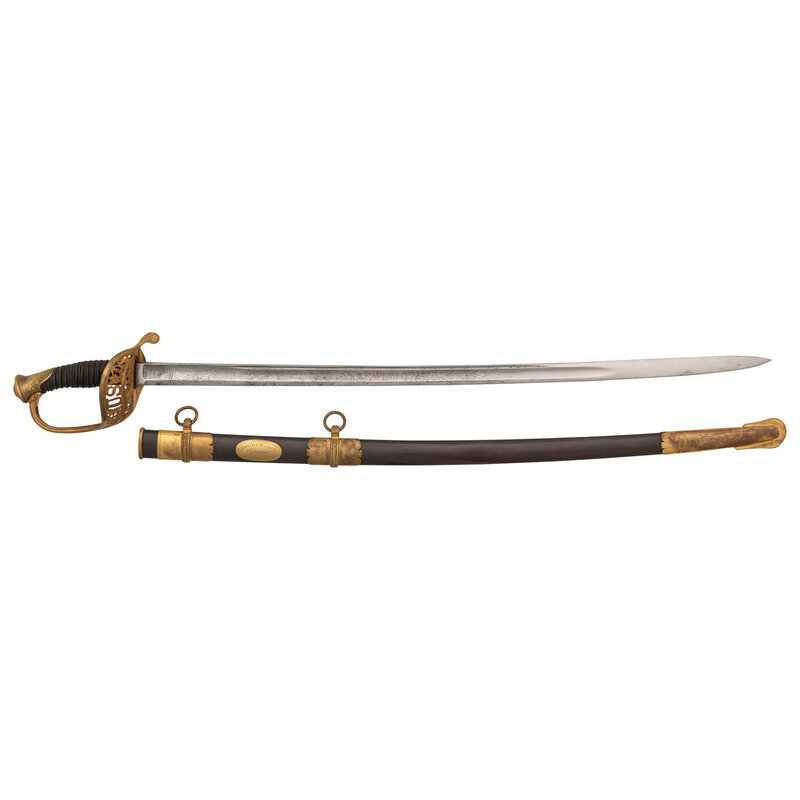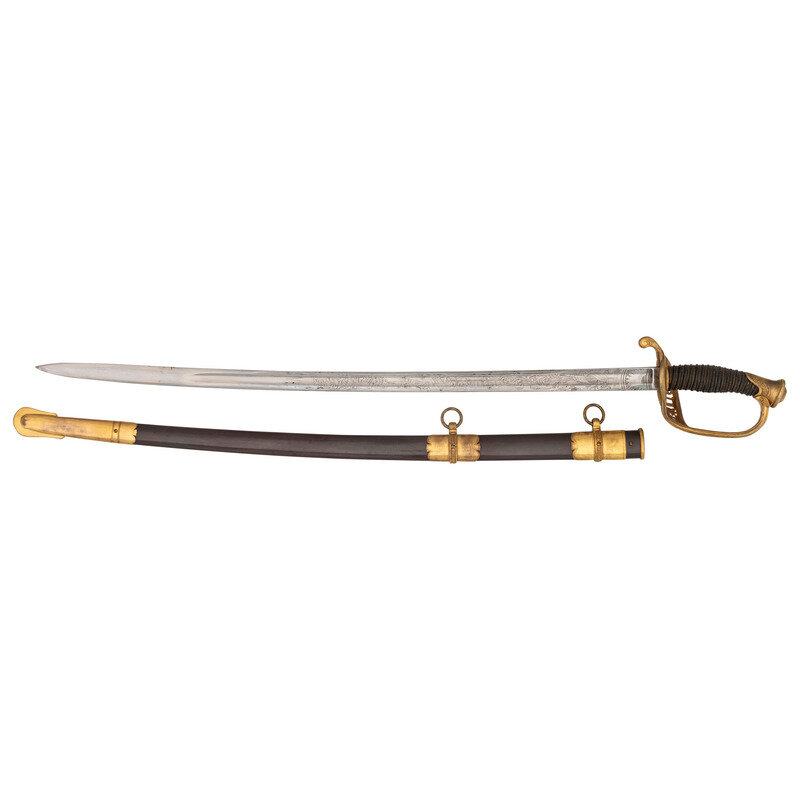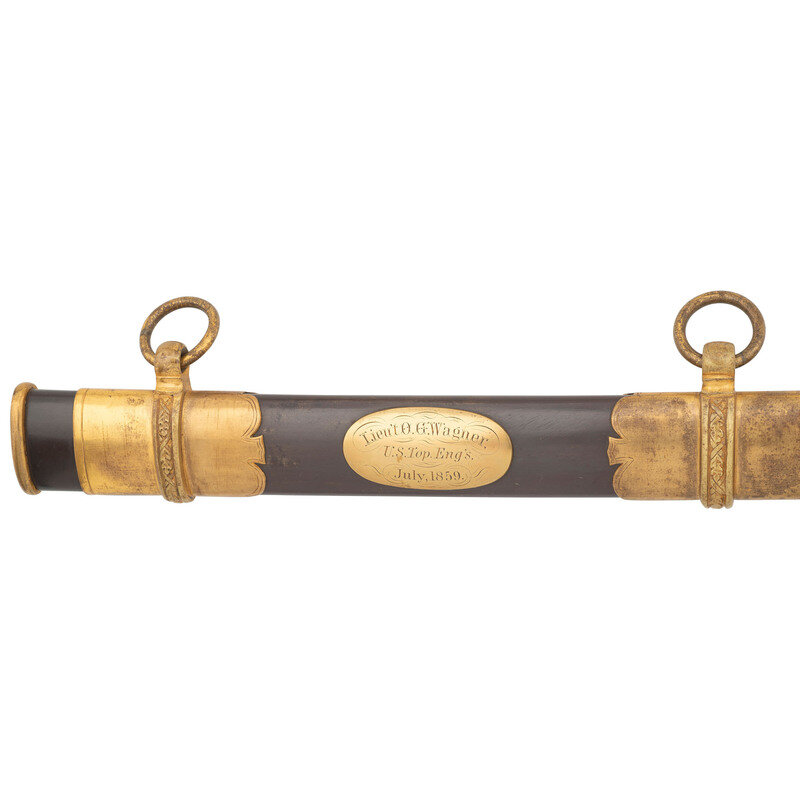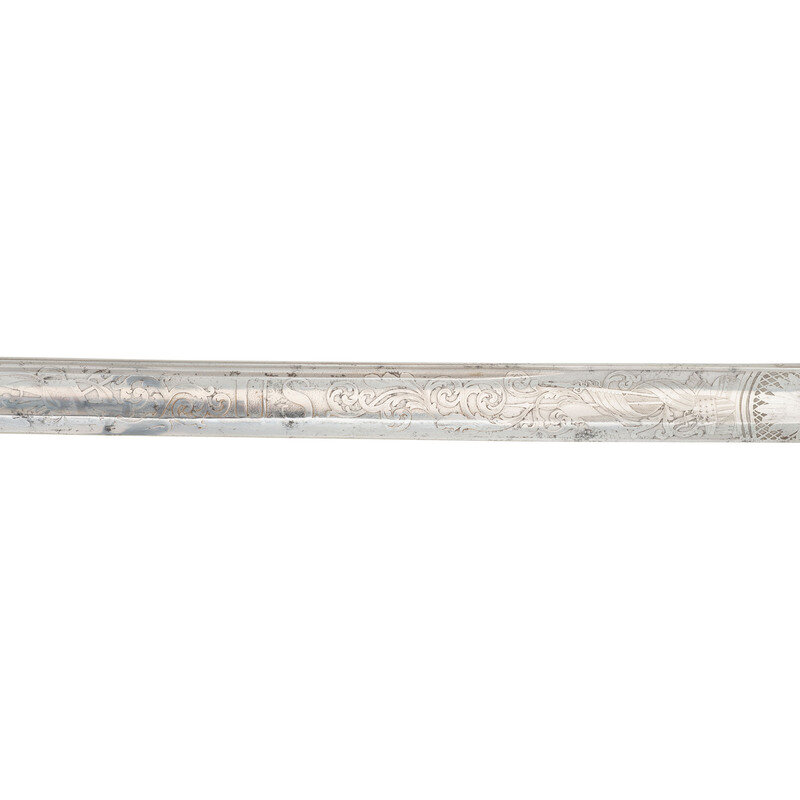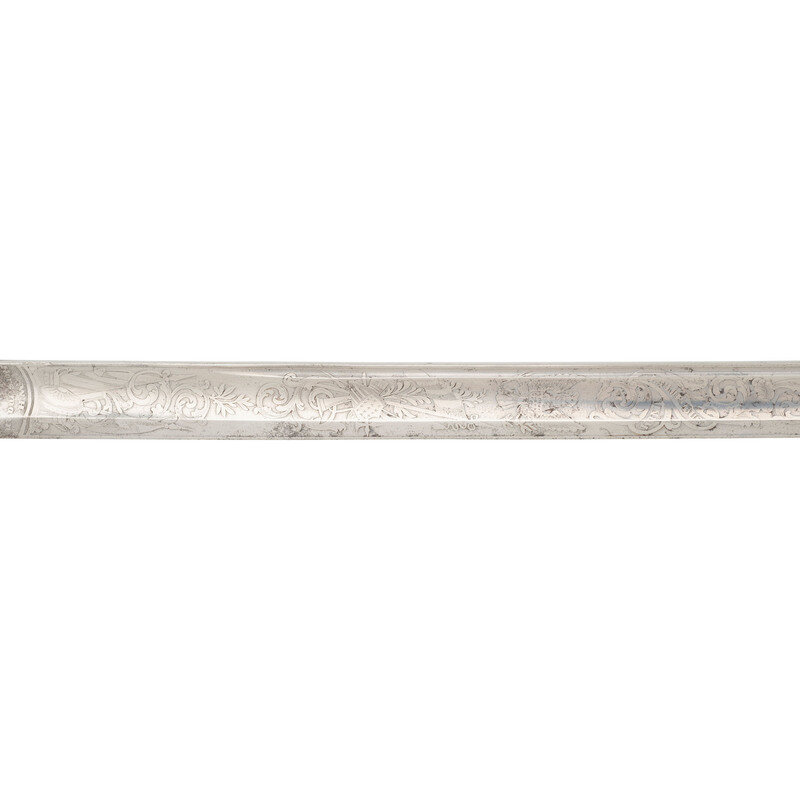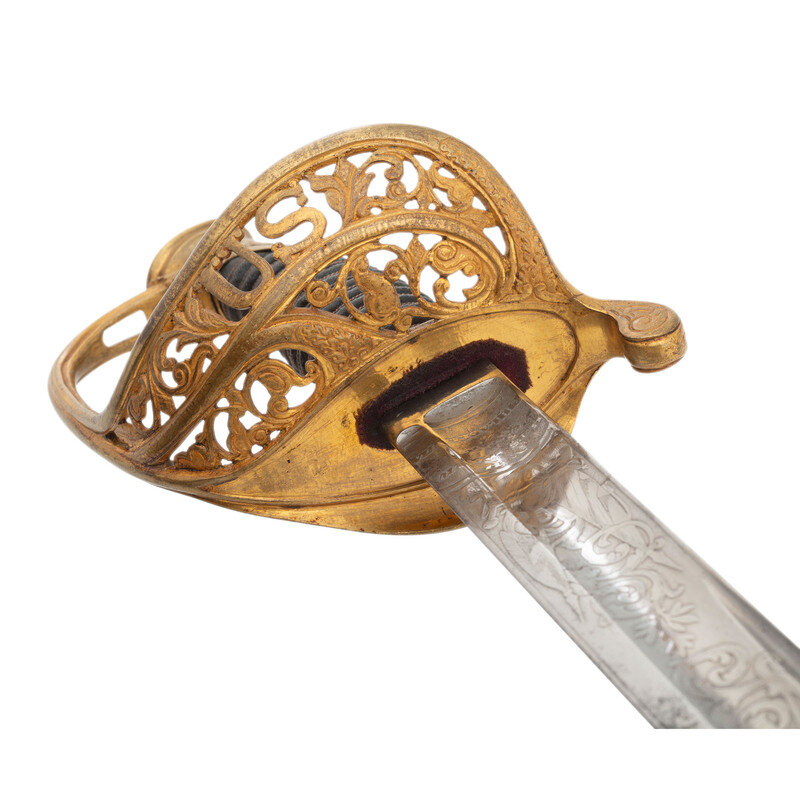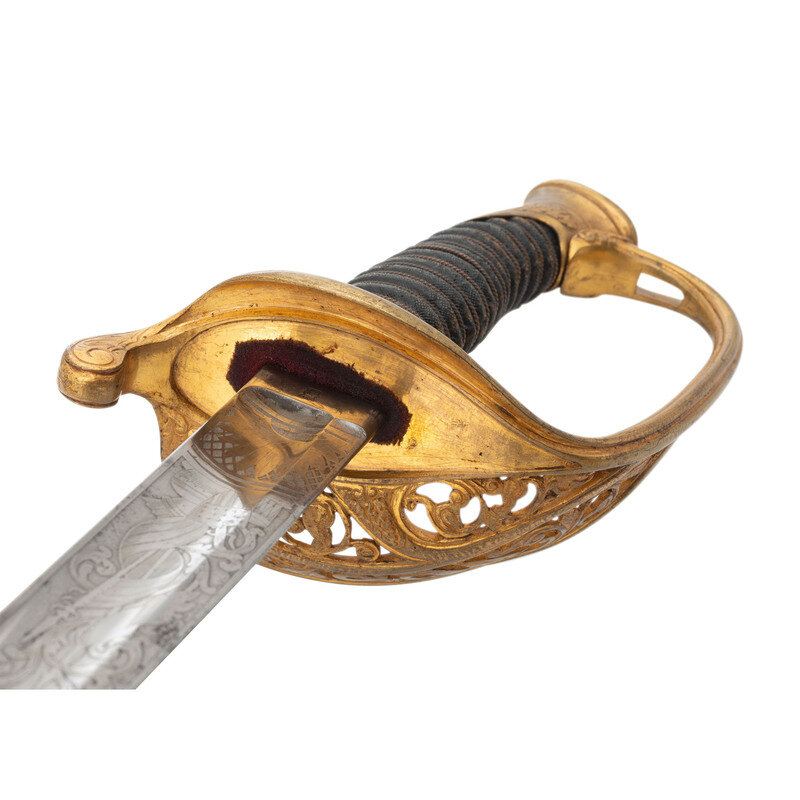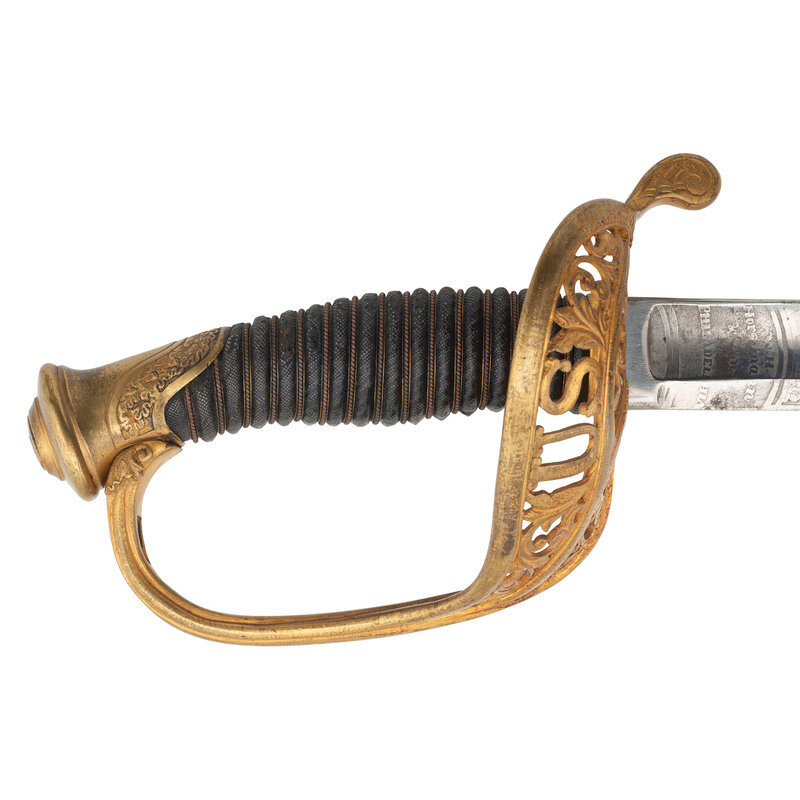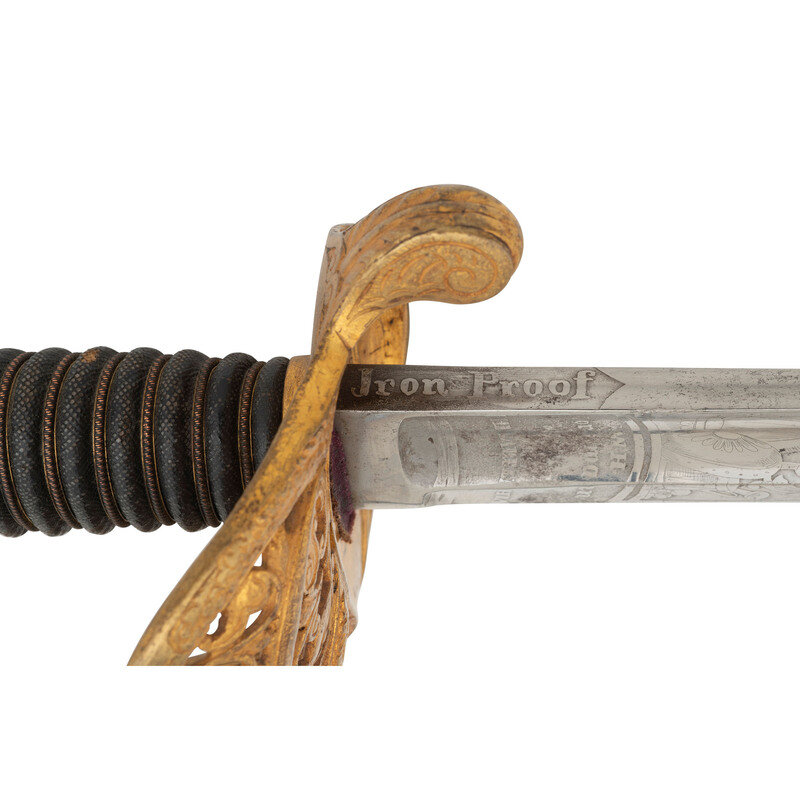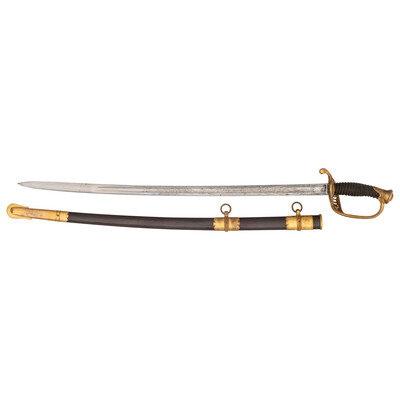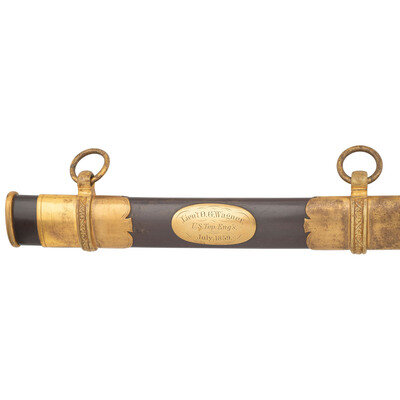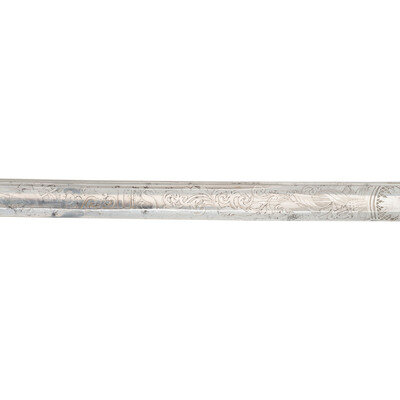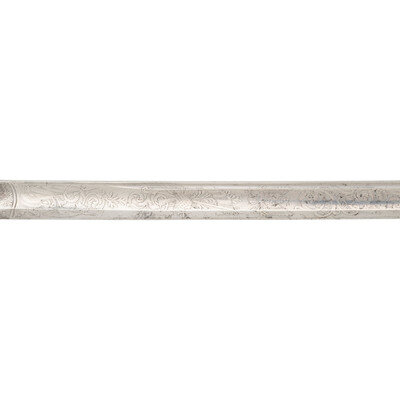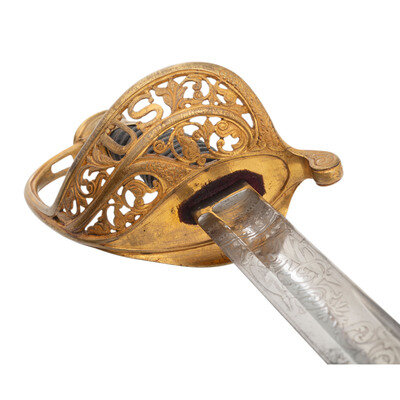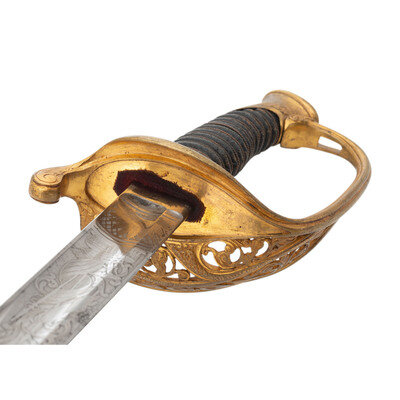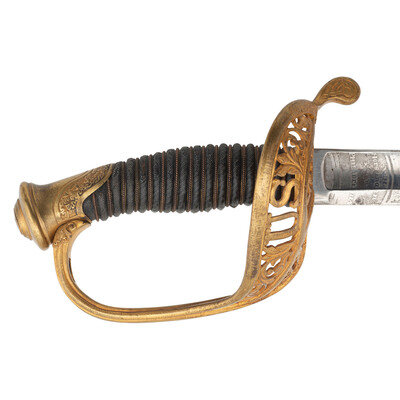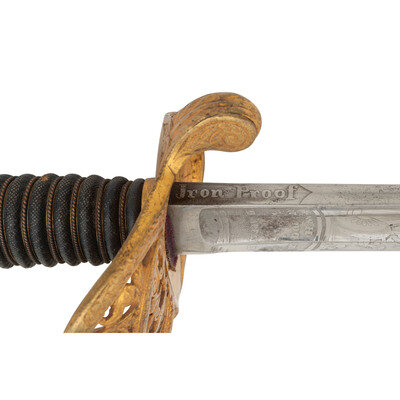Lot 82
31.5" flat backed slightly curved, single-edged spear point blade with 23" stopped median fuller, 1.25" wide at the ricasso. 38" in overall length with a 6.25" gilt brass hilt with open work foliate basket guard with the letters US in the face. Grooved wood grip with shagreen covering and fifteen wraps of triple strand wire, with the center wire twisted. Blade etched W.H./HORSTMAN/& Sons/PHILADELPHIA on the obverse ricasso and stamped with the Weyersburg King's Head trademark on the reverse ricasso. Blade is etched with foliate, martial and patriotic themes with a panoply of arms and a spread-winged eagle being the central panel on the obverse and a US being the central image of the reverse. The sword is accompanied by its browned steel scabbard with gilt brass mounts which has an oval presentation plaque attached between the two suspension mounts that is engraved Lieu't O.G. Wagner/U.S. Top. Eng's./July 1859. This sword is pictured and discussed on pages 207-208 of John Tillmann's Civil War Army Swords - A Study of United States Army Swords from 1832 through 1865. This sword was originally offered for sale by Norm Flayderman in Catalog #57
Orlando G. Wagner graduated 5th in the 1859 class from West Point and was commissioned a brevet 2nd lieutenant in the Topographical Engineers in July of 1859. His initial posting was out west where he served at the Assistant Topographical Engineer in the Department of New Mexico from October 3, 1859 through July 7, 1861. In May of 1861 he was made a full 2nd lieutenant and also served in the roll of Acting Assistant Adjutant General through the end of his time at that post in early July. On July 12, 8161 he was promoted to 1st lieutenant and was transferred to the staff of General Rosecrans and on August 3 he was promoted to 1st lieutenant. He served as the Assistant Topographical Engineer for Rosecrans' command in western Virginia and was breveted captain on September 10, 1861 for "Gallant and Meritorious Services in the Campaign in Western Virginia." He took a leave of absence in January of 1862 for sickness and returned to duty the following month. He served as the Assistant Topographical Engineer for the Army of the Potomac during the Peninsula Campaign from March through April of 1862 and was mortally wounded while mapping the defenses of Yorktown on April 16, 1862. He had an arm amputated in an attempt to save his life but he died on April 21, 1862. On the 17th he was breveted to major for "Gallant and Meritorious Services at the Siege of Yorktown, where he was mortally wounded while reconnoitering the enemy's works."
After the war, General James Longstreet would later remember the killing of Wagner that day, and noted in part: "...that shot at Hill was the second best shot I ever saw. The best was at Yorktown. There a Federal Officer came out in front of our line, and sitting down to his little platting table began to make a map. One of our officer's carefully sighted a gun, touched it off, and dropped a shell into the hands of the man at the little table." That Wagner survived an apparent direct hit by a piece of Confederate artillery was a miracle, even though he died seven days later.
The sword is accompanied by a large binder of information about Wagner, including copies of service records, hie mentions in reports, newspaper articles, part of the original Flayderman catalog it was purchased from and copies of the relevant pages of Thillmann's book in which it is published.
